#Minneapolis College of Art and Design Library
Explore tagged Tumblr posts
Text

Der Froschkönig (The Frog King). Card from a series of color lithographs by an unknown German artist, 1905 or earlier, depicting scenes from the tales of the Brothers Grimm. Here, the frog returns to the princess her golden ball that had fallen down the well. This card is now in the Jack Zipes Historic Fairy Tale Postcard Collection, Minneapolis College of Art and Design Library. Photo credit: MCAD Library.
#art#art history#fairy tale#fairy tales#fairytale#Frog Prince#Brothers Grimm#postcard#color lithograph#German art#20th century art#Jack Zipes Historic Fairy Tale Postcard Collection#Minneapolis College of Art and Design Library
119 notes
·
View notes
Text








It’s Fine Press Friday!
On this first Friday of the New Year, we’re delighted to highlight the work of book artist and UWM Art & Design faculty member Melissa Wagner-Lawler. In Solitude was printed by Red Thread Letterpress in June of 2023 as part of the In Cahoots Residency in Petaluma, California, in a limited edition of 30 copies signed by the artist. Wagner-Lawler created both the text and images, which were letterpress and relief printed. The font is Optima 14.
The spare prose cuts across the images; images and phrases wrap around pages; ideas linger (mostly) unpunctuated, unresolved, “existing in expansiveness.” The central signature folds out in a long accordion revealing a verdant, abstract solitude. The book lives in a turquoise clamshell box. In the colophon, Wagner-Lawler explains that the book was created “in an old horse barn” at Macy Chadwick’s In Cahoots Residency. (Back in December we featured some of Chadwick’s work produced at In Cahoots.)
Wagner-Lawler studied printmaking at both the Milwaukee Institute of Art and Design and the Minneapolis College of Art and Design. At UWM she teaches in the Printing and Book Arts area of Art & Design, as well as the First Year Program. Her work is featured in collections across the country, including the Smithsonian American Art & Portraiture Library, Yale University, Stanford University, Library of Congress Rare Books Collection, and, of course, UWM’s Special Collections.

Watch a brief exploration of another Wagner-Lawler book by Bainbridge Island Museum of Art.
View other posts related to Melissa Wagner-Lawler.
View other Fine Press Friday posts.
--Amanda, Special Collections Graduate Intern


#Fine Press Friday#Fine Press Fridays#finepressfriday#finepressfridays#In Cahoots#Melissa Wagner-Lawler#Red Thread Letterpress#In Cahoots Residency#UWM#Peck School of the Arts#UWM Art & Design
26 notes
·
View notes
Video
Death of a Mad Dog by MCAD Library Via Flickr: Title: An Elegy on the Death of a Mad Dog Author: Oliver Goldsmith (English, 1728-1774) Illustrator: Randolph Caldecott (English, 1846-1886) Engraver and printer: Edmund Evans (English, 1826-1905) Work type: Illustration Medium: color wood engraving Publisher: George Routledge & Sons, London Date: 1879 Page: [p. 19] Page size: 227 x 202 mm. Illustration size: 200 x 172 mm. Related text [pp. 16-18]: The dog and man at first were friends; / But, when a pique began, / The dog, to gain some private ends. / Went mad, and bit the man. Subjects: Children’s literature; Poetry; Dogs; Couples Interpretive notes: The dog bites the man on his leg, as a shocked couple looks on in dismay. Work rights: Work in the public domain Image file: 23091005 Repository: Collection of Allan T. Kohl, Minneapolis College of Art and Design (MCAD), Minneapolis, Minnesota, United States
2 notes
·
View notes
Text
Art of the Poster 1880-1918
by MCAD Library
In the late nineteenth century, lithographers began to use mass-produced zinc plates rather than stones in their printing process. This innovation allowed them to prepare multiple plates, each with a different color ink, and to print these with close registration on the same sheet of paper. Posters in a range of colors and variety of sizes could now be produced quickly, at modest cost. Skilled illustrators and graphic designers – such as Alphonse Mucha, Jules Chéret, Eugène Grasset, and Henri de Toulouse-Lautrec -- quickly began to exploit this new technology; the “Golden Age of the Poster” (1890s through the First World War) was the spectacular result.
This collection of over two hundred digital images of historic posters from the Belle Époque and early twentieth century was originally compiled to support the teaching of Design History and Graphic Design courses at the Minneapolis College of Art & Design. Many of the artists who designed posters during this period were already well-known in other media, such as painting and architecture. Their creative success helped to bridge the gap between “high art” and popular visual culture, and to introduce even those who never visited museums or galleries to examples of innovative modern design. Today, these striking posters are highly regarded as being among the most distinctive examples of fin-de-siecle styles such as Art Nouveau.
1 note
·
View note
Text
Week 2: Reflections, Creative Leadership
Hello world. Good Evening! Welcome to my tumblr blog: created as an observatory to reflect on my learnings throughout this creative leadership journey of mine. I have not been on this platform since I was a younger, teenage version of myself (who had not a care in the world about digital footprint and was under no scrutiny, whatsoever.)

Self-portrait on black & white 35mm film (circa 2010), Minnesota
I digress. Typing into the eleventh hour and publishing my stream-of-consciousness style of writing live onto the internet really takes me back to a time of leaning into life's unknown(s) with more excitement!
On this blog, I'll be reflecting on my learnings throughout the 2024 fall semester at MCAD. Over the course of 15 weeks, this space will serve as a digital library of sorts- a place to gather my reflections on the content in this Creative Leadership course and review how my ideas on leadership and creative organizing have evolved over time. Think of it as a live, journal exploring creative leadership in practice!
We begin this week with reflections on the following few blog posts / articles assigned in our Week Two modules: 1) Resurgence Magazine: At the Heart of Earth, Art & the Spirit, No. 264., Leadership Opening a New Dialogue and also, 2) Blogposts from Diane Ragsdale on the site artsjournal.com titled- On a Strategy of Indeterminacy: Or, the Value of Creating Pathways to the Unforeseen and Co-Creating with a Conscience: Or, Why Study Leadership at an Art & Design College?
Diane Ragsdale served as the first leader of the Master of Arts in Creative Leadership (MACL) program at the Minneapolis College of Art and Design. I had the great honor of knowing her and learning from her expertise in the field- as I was a recent graduate student of the program. Diane passed away in January of this year, and she is dearly missed by her community of students, colleagues, family and friends. She left an immensely positive impact on the lives of many people, whom now each carry a piece of her legacy forward. Diane continues to inspire all of us in our journeys towards world-making.

Cohort 2 of the MACL Program (2023), Image by Diane Ragsdale
As I reflect on her writing within these blogposts, I'm grateful to have known such a brilliant, caring and generous person such as Diane Ragsdale. In my creative leadership journey, she has inspired me to grow and to have confidence in my ability to be a part of something bigger than myself. Diane was an incredible supporter of each one of her students- and always led with values of compassion and care.
In her blogpost, On a Strategy of Indeterminacy: Or, the Value of Creating Pathways to the Unforeseen, Diane reflects on learnings from some of her favorite literature as it relates to the creative process. One of these books is a series of essays from Rebecca Solnit, titled A Field Guide to Getting Lost. Solnit meditates upon the notion of embracing the unknown- and seeks to understand this relationship between the experience of "feeling lost" and discovering just what is beyond the familiar. In the context of organizational processes, Diane also introduces us to Emergent Strategy: Shaping Change, Changing Worlds by Adrienne Marie Brown, which further describes how organizational systems can embrace a state of flux- thus shifting, evolving and adapting through challenges and, as Brown describes, together creating those "intentional changes that embody the just and liberated worlds that we long for".
In a following post, Co-Creating with a Conscience: Or, Why Study Leadership at an Art & Design College?, Diane goes on to define Creative Leadership as the process of "envisioning and realizing change and innovation while attending to shared values, mission, and social impact." She conceptualizes creative leadership as the capacity to collaborate across differences to create collective, societal change. Diane emphasizes the value of having a collaborative environment where students can connect with others who share similar change goals, ask questions, learn new practices, offer encouragement and solidarity as we collectively build the next, more beautiful world.

Cyanotype Print / Statement of Commitment, Photo Book, (2024)
The article Leadership Opening a New Dialogue (No. 264), Resurgence Magazine: At the Heart of Earth, Art & the Spirit, continues on to describe how today's leaders operate in a multi-faceted world- balancing both the need to serve people and the planet. In the chapter describing the shift from a Hero-to-Host Leadership model: authors Margaret Wheatley and Deborah Frieze share how this type of leadership structure invites people from many parts of the system to engage in meaningful conversation- thus, discovering new insights and possibilities for action. These leaders provide the right conditions for collaboration: via building upon trust, learning from their experiences and supporting their teams to make their mission / goal achievable. As best summarized in the following chapter, "Leadership is not about the individual- but the community".
Thanks for taking the time to read this blog post, until next time!
--
References
• Ragsdale, Diane. "On a Strategy of Indeterminacy: Or, the Value of Creating Pathways to the Unforeseen." Arts Journal Blog. (2023).
• Ragsdale, Diane. "Co-Creating with a Conscience: Or, Why Study Leadership at an Art & Design College?" Arts Journal Blog. (2022).
• Wheatley, Margaret and Frieze, Deborah. "Keynotes: From Hero-to-Host." Resurgence Magazine: At the Heart of Earth, Art & the Spirit, No. 264. (January / February 2011)
• Brown, Adrienne. "Emergent Strategy: Shaping Change, Changing Worlds". AK Press. (2021).
• Solnit, Rebecca. "A Field Guide to Getting Lost." Penguin Books. (2018).
1 note
·
View note
Photo
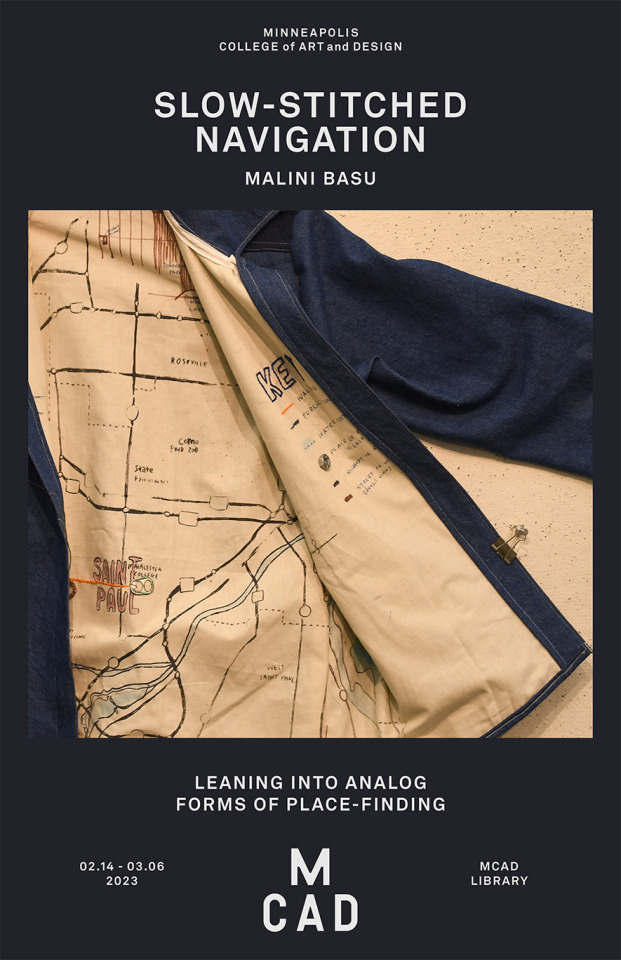
Slow-stitched Navigation
A Library Gallery exhibition by Malini Basu
We highly recommend making your way to see Malini Basu's exhibition: Slow-stitched Navigation, in the Library Gallery.
Exhibition: Tuesday, February 14–Monday, March 6 Library Gallery @mcad
Introduction to the installation by Malini Basu:
I have never been good at directions—short walks that should be second nature to me could turn into hour-long meanders. When I moved from my home in India to the Twin Cities, I embraced the GPS system on my phone wholeheartedly, enjoying the ease with which I was able to navigate the public transit systems and the city at large. I followed the guiding blue line unquestioningly, trusting that I was being fed the most efficient path. Unsurprisingly, my mindless navigation did not assuage the disconnect I felt towards the cityscape I walked in and land I lived on. In this body of work, I lean into slower modes of traversing the city. I focus on building an observational practice for myself, using objects found on the sidewalks as cues to look up and take note of my surroundings. I gradually build out my own mental map by tying the object to the surrounding intersection, the plants in season around me, the smells, the cracks in the sidewalks, my personal memories in that area. This practice led to tactile explorations of how I can connect my body to my movements through a place. While this project began as a response to navigating Minnesota, I was able to continue this mindful observation while in India this past winter. The works in this show thus reflect walks in both Minneapolis as well as Kolkata.
Recommended library books:
Wanderlust: Actions, Traces, Journeys, 1967-2017, by Rachel Adams, Rebecca Solnit, Lori Waxman, and Jane McFadden
The Map as Art: Contemporary Artists Explore Cartography, by Katharine A Harmon and Gayle Clemans
Walking and Mapping: Artists as Cartographers, by Karen O’Rourke
Walking Art Practice: Reflections on Socially Engaged Paths, by Ernesto Pujol
The Snowy Day, by Ezra Jack Keats
Fray: Art and Textile Politics, by Julia Bryan-Wilson
Drawing from Memory, by Allen Say (on order)
#maps#Minnesota#India#Kolkata#library gallery#mcad library gallery#library gallery @mcad#minneapolis college of art and design library#MCAD Library#mcad
9 notes
·
View notes
Photo

Visiting artist, Adrian Piper, lecturing at the Minneapolis College of Art and Design, 133 East 25th Street, Minneapolis, Minnesota
Description: This photograph shows visiting artist, Adrian Piper, speaking to a seminar class. We see her with a chalk board, where she has noted items of interest. She was at MCAD from Oct 24-28, 1983 as part of the series, "The Power of Art: The Language of Images". The Minneapolis College of Art and Design was previously named the Minneapolis School of Fine Arts from 1886-1909 and the Minneapolis School of Art from 1910-1969.
Inscription: verso-(in ink pen) "Word Works Adrian Piper - lesson in Funk" "No Negatives see -" (Stamped) "PHOTO RIK SFERRA ©", (in ink pen) "Oct. 1983"
Creator: Sferra, Rik
Date of Creation: October 1983
Item Type: Still Image
Item Physical Format: Gelatin silver print
Dimensions: 20.3 cm x 25.3 cm
MCAD Library
41 notes
·
View notes
Text

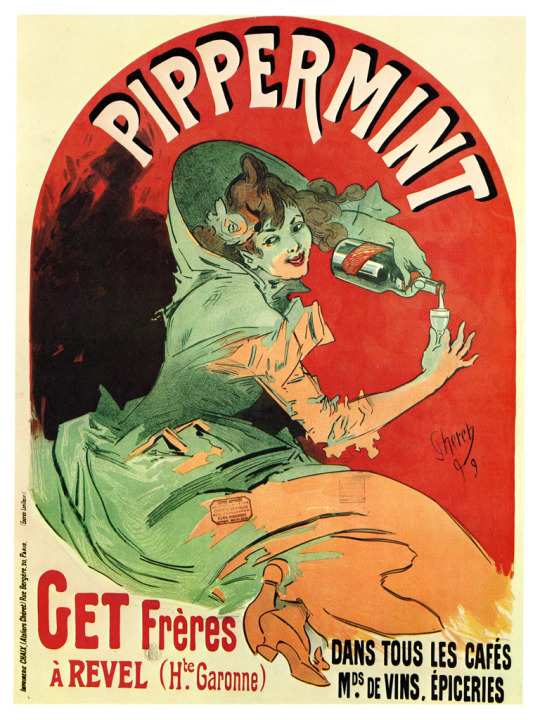
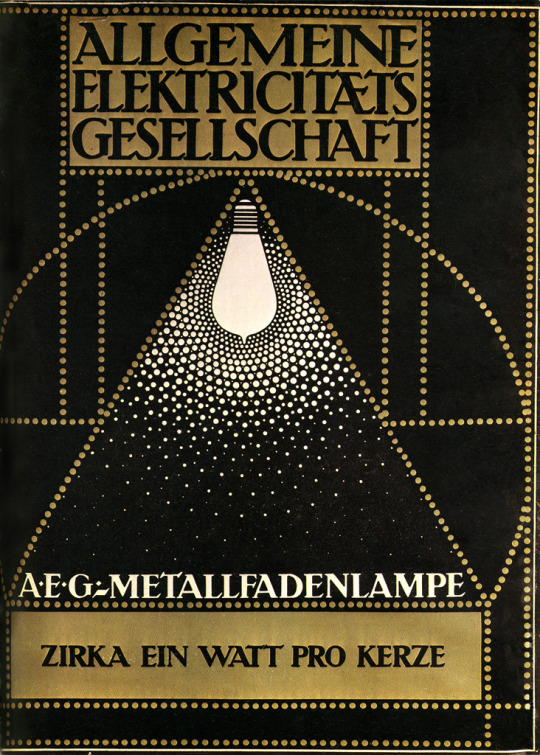
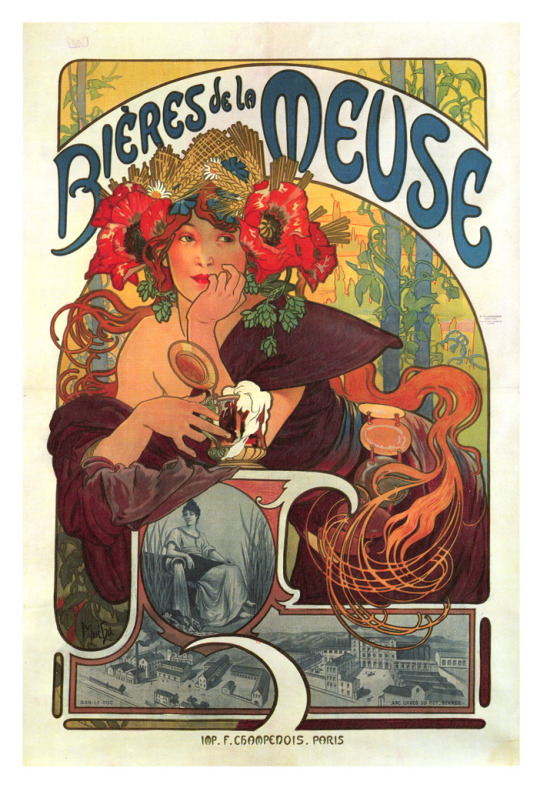
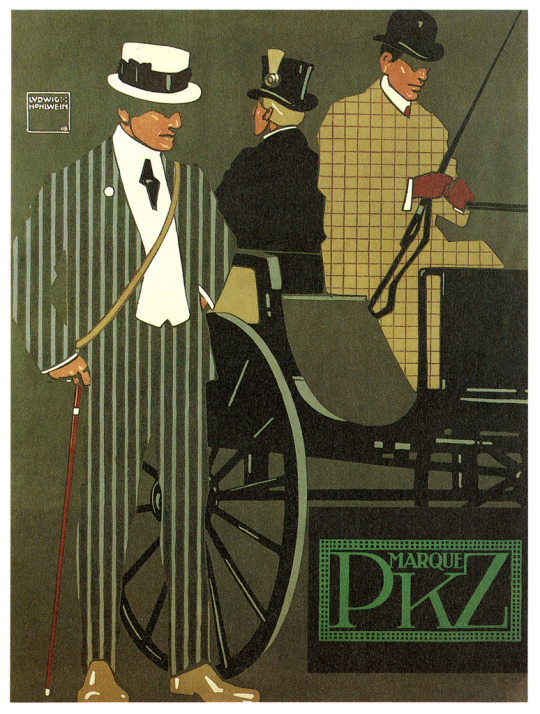
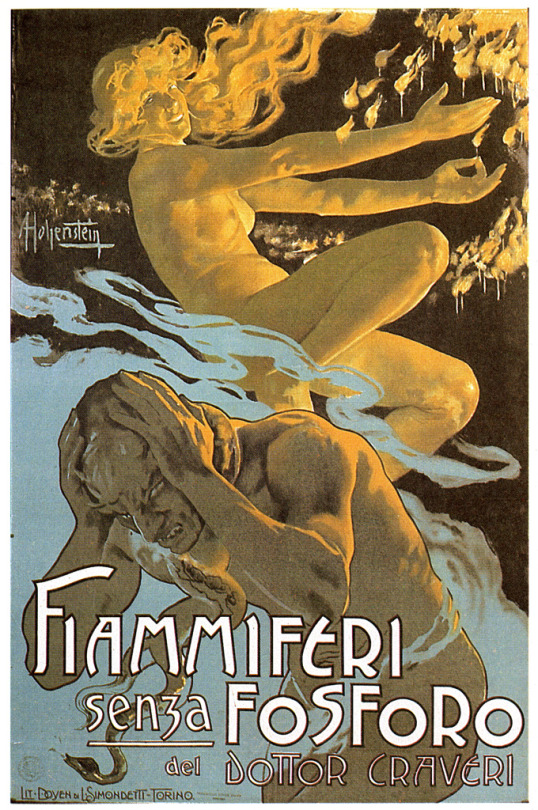

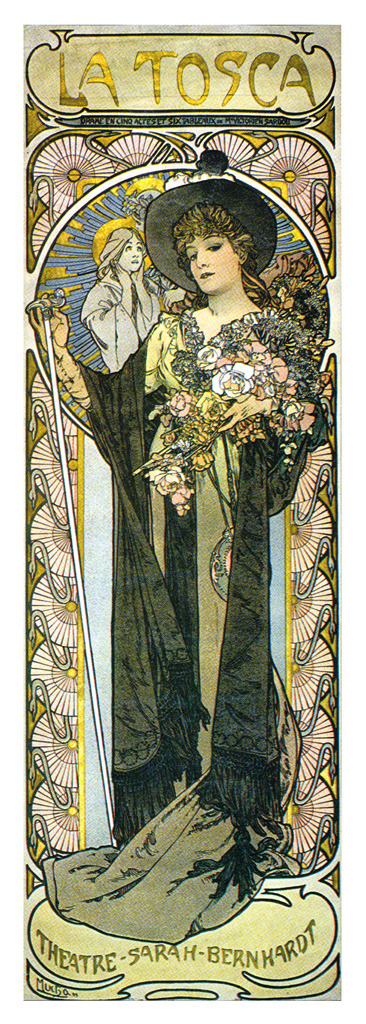
The Minneapolis College of Art and Design (MCAD) Library
Art of the Poster 1880-1918
"In the late nineteenth century, lithographers began to use mass-produced zinc plates rather than stones in their printing process. This innovation allowed them to prepare multiple plates, each with a different color ink, and to print these with close registration on the same sheet of paper. Posters in a range of colors and variety of sizes could now be produced quickly, at modest cost."
#privat livemont#theatrical posters#theatre#illustration#alphonse mucha#vintage ad#vintage#golden age#color litograph#jules cheret#adolfo hohenstein#ludwig hohlwein#peter behrens#art deco#art nouveau#1880s art#c. 1900#edwardian
241 notes
·
View notes
Photo

Rainy Evening on Hennepin Avenue, Robert Koehler, c. 1902, Minneapolis Institute of Art: Paintings
Landscape A rainy night in Paris, or something closer to home' Robert Koehler’s familiarity with French Impressionism is evident from the loose brushwork and soft, misty forms. Prominent in the picture are the artist’s wife, Marie, and their son, Edwin, along with the family dog. The building in the background is the Minneapolis Public Library (since demolished), which stood at 10th Street and Hennepin Avenue from 1889 until 1961. In 1893 Robert Koehler became the director of the Minneapolis School of Fine Arts, now the Minneapolis College of Art and Design. Size: 25 3/4 x 24 in. (65.41 x 60.96 cm) (canvas) 36 1/8 x 38 1/4 in. (91.76 x 97.16 cm) (outer frame) Medium: Oil on canvas
https://collections.artsmia.org/art/303/
8 notes
·
View notes
Photo
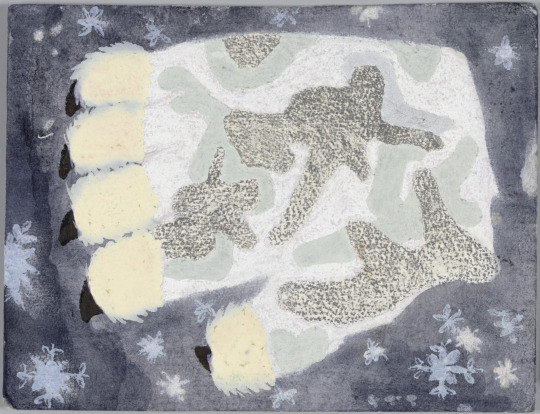
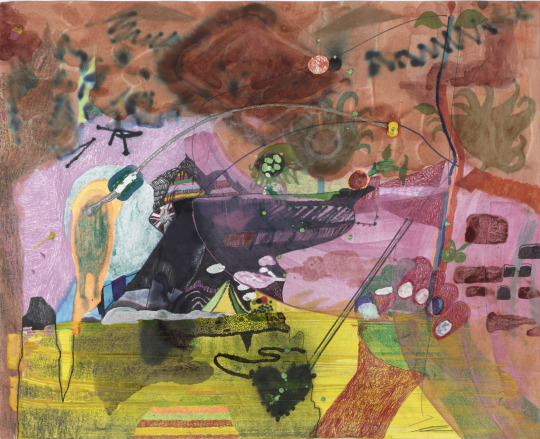
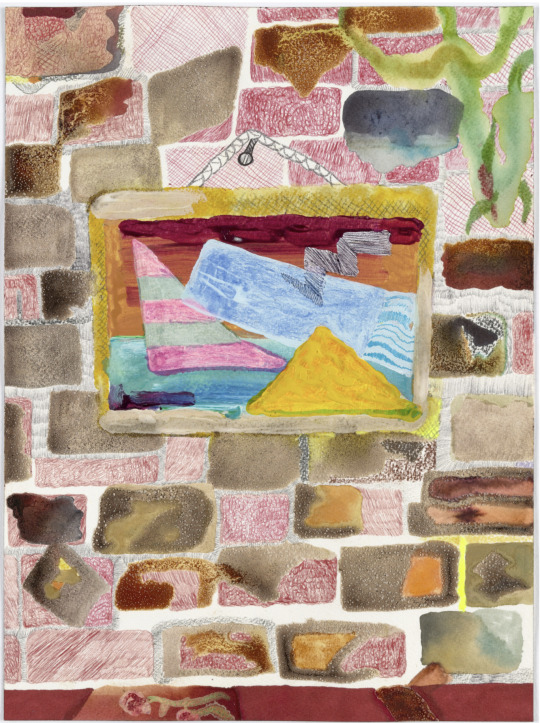
Tyson Reeder
Bio:
Born: 1974,
Hometown : Fairfax, VA
Lives and Works: Chicago, IL
Education: B.A. Montana State University, Bozeman, MontanaBFA, University of Minnesota, Minneapolis, MinnesotaArt Center College of Design, Pasadena, CASkowhegan School of Painting and Sculpture, Skowhegan, Maine
Chicago-based artist and curator Tyson Reeder works in a multitude of mediums, from more traditional painting and video to elaborate site-specific installations, performative spaces and interactive collaborations. His dramatically colorful paintings, which he frequently creates “en plein air,” feature landscapes, everyday objects and clashing pastel patterns, sometimes incorporating pop culture and hip hop references. At once eclectic and irreverent, Reeder’s work mines the depths of art history and contemporary experience, bringing parody to Fauvist inspired formalism.
Reeder has shown in solo exhibitions at CANADA, New York, Daniel Reich, New York, The Green Gallery, Milwaukee, Office Baroque, Brussels, Belgium, Jack Hanley Gallery, Los Angeles and Gavin Brown’s Enterprise, New York. His group exhibitions include Shane Campbell, Chicago, Museum of Modern Art Library, New York, Foxy Production, New York and David Zwirner, New York.
In addition to his individual practice, Reeder has also become known for his curatorial projects with his sister-in-law Elysia Borowy-Reeder and brother Scott Reeder—thier storefront Milwaukee gallery General Store curated the now-infamous “Drunk vs. Stoned” group exhibitions at Gavin Brown’s Enterprise. The trio’s most recent project is entitled Club Nutz: a pop up performance space that welcomes comedy, art, music, lectures, and absurdity. Since its inception adjacent to Green Gallery in Milwaukee, the Reeders have taken Club Nutz to Frieze Art Fair in London, The Museum of Contemporary Art in Chicago and Salon 94 in New York, among others.
Questions:
1.) How does this artist’s artwork compare to past abstract artwork?
2.) How does this artwork relate to ruptured space artwork discussed in class?
-Emma Ruark
2 notes
·
View notes
Photo

Woodcut ‘New York City, Mixed Heights’ 2002.
(print via eBay)
(Yvonne Jacquette studied at the Rhode Island School of Design from 1952 to 1956. She taught at Moore College of Art in Philadelphia in 1972 and was a visiting artist and painting instructor at the University of Pennsylvania from 1972 to 1976 and again from 1979 to 1982. In the interim, from 1975 to 1978, she taught at Parsons School of Design in New York City. She taught at the Graduate School of Fine Arts at the University of Pennsylvania from 1979 to 1984. Since 1991, Jacquette has been a visiting critic at the Pennsylvania Academy of the Fine Arts Graduate School. She was honoured by the American Academy of Arts and Letters in 1990. Her work has been exhibited in numerous group and solo shows. Her works are in the collection of the Smithsonian American Art Museum; Library of Congress; Minneapolis Institute of Arts; Museum of Modern Art, New York; Yale University Art Gallery,)
(via eBay)
#art#woodcut#holzschnitt#cityscape print#woodblock print#woodblock & print#wood engraving#woodgravure#printmaking#new york city#austrian-american artist#american printmaker#artwork
30 notes
·
View notes
Photo







2021 Ettinger Book Artist Series
MELISSA WAGNER-LAWLER
Because of the Covid-19 Pandemic, 2020 was the first time in 25 years that we did not hold our annual book artist lecture and workshop series, which since 2006 has been named after our principal funder, the Ettinger Family Foundation. Tomorrow, November 9 at 6 pm, we are pleased to restart this important series for 2021 with one of our own: book artist, papermaker, letterpress printer, and UWM Art & Design Lecturer Melissa Wagner-Lawler.
A graduate of the Milwaukee Institute of Art and Design and the Minneapolis College of Art and Design, Wagner-Lawler has been a Lecturer in Print & Narrative Forms and the First Year Program in the UWM Art & Design Department since 2010. In her presentation, she will discuss her process and practice, and her reasons for choosing the book as her primary art medium. This presentation is being held in-person at the UWM Library and virtually via Zoom and is free and open to the public, although we request that you register online.
Above we are showing a few images from Melissa’s 2015 letterpress artist’s book The Familiar Space, printed in an edition of only four copies. The book was created using prompts selected from Julie Chen’s and Barbara Tettenbaum’s Artist’s Book Ideation Card set, which randomly establishes specific parameters within which the artist must work. Some of the constraints established for this project include:
Paper - neutral (Okawara) Technique - unfamiliar (pressure printing) Structure - unbound (pages can be removed) Layout - across folds (image crosses the folds on both sides of the page) Colors - monochromatic (pink!) Text - process of erasure (laser cut text)
Hope to see you tomorrow night!!
View another post on the work of Melissa Wagner-Lawler.
#Ettinger Book Artist Series#Melissa Wagner-Lawler#Melissa Wagner Lawler#artists books#book artists#Ettinger Family Fondation#lecture series#The Familiar Space#Artist Book Ideation Cards#online lectures
23 notes
·
View notes
Text
Updated release—Theaster Gates at Gagosian New York
October 29, 2020

Revised and expanded press release for THEASTER GATES Black Vessel October 10–December 19, 2020 555 West 24th Street, New York __________ View Installation Images I always find myself returning to the vessel. It is part of the intellectual life force of my practice and it precedes all other forms of making. —Theaster Gates Gagosian is pleased to present Black Vessel, Theaster Gates’s first-ever solo exhibition in New York. Gates’s oeuvre is among the most conceptually and materially rich in contemporary art, anchored equally in the canons of art history, the racial ideology of the Black diaspora, and the artist’s own personal history. Through an art practice predicated on cultural reclamation and social empowerment, Gates exchanges and recharges objects and ideas, proposing the artwork as a communicating vessel or sacred reliquary of recollected histories, critical vitality, and shared experience. Traversing a broad range of formal approaches such as painting, sculpture, sound, and performance, as well as the processes of salvaging, archiving, and place making, he delivers penetrating social commentary on labor, material, spiritual capital, and commodity within a close examination of the urban condition. The Brick Reliquaries (2020) are Gates’s latest sculptural experiments. By firing bricks with a strong manganese content to an excessive 2300°F, the known properties of the materials are transformed into the mysteries of heat-based sculpture. In some instances, the material loses its specificity when pushed to such limits; in others, the carbide shelves inside the kiln fuse with the bricks and other sculptural elements that rest on them, becoming host to material transformation. In 2012 Gates began to formalize his knowledge of roofing techniques into a new territory of experimental painting, working with tar to make the invisible roof legible. In a new suite of paintings completed this year, Gates has intensified his approach, crafting painted torch down into taut conjoined backdrops for the interplay of archaeological tarred fragments. Just as postwar artists set themselves apart from gestural abstraction by utilizing mass-produced industrial materials and techniques in place of paint and canvas, Gates has imbued abstract painting with unprecedented form and meaning—first with the Civil Tapestries (2011–), which charged Minimalist language with the legacies of racial injustice; and now in ruggedly elegant works that employ the signifying materials and skilled labor of roofing to invoke a poignant meditation on urban spirit and its implicit obsolescence. Gates promotes the vessel as a container of the concrete, the symbolic, and the spiritual—a metaphor for embodied existence or a means by which to gather communities together in time and space. For him, the clay vessel is a universal object of ritual significance. In a diverse group of unique large-scale works in glazed and fired clay, his evident formal virtuosity unites ancient traditions with modernist aesthetics, and draws elective affinities between Eastern, Western, and African techne. Switching scales from vessel as object to vessel as architecture, Gates has dramatically transformed the vast west gallery into a resonant place for shared contemplation by lining the walls entirely with Roman bricks customized from reconstituted remainders, blackened with manganese dioxide and dye. (A direct precursor to this gesture is the 2017 permanent commission Black Vessel for a Saint at the Walker Art Center in Minneapolis, a minimalist cylindrical shrine built from black bricks that contains a life-size statue of St. Laurence, the patron saint of librarians and archivists.) Housed in this awe-inspiring brick sanctuary are two large-scale archive works, both rich repositories of historic Black printed matter. The towering New Egypt (2017) houses the complete bound volumes of Ebony, the Johnson Publishing Company periodical (1945–2016) that promoted and celebrated the realities of Black American middle-class life. The red, black, green, and dark gray covers reference the Black Power movement, while the wooden shelving structure acknowledges various forms of Africanized architecture. The title of the work and its content reflect the teachings of Dr. Maulana Karenga, a founder of Kwanzaa and a prominent figure in early Africana studies, who posited that the Black American experience is adjacent to Nubian and Egyptian experiences of “African kingdoms.” Given that, historically, a key Western tactic to dominate other civilizations was to assassinate scholars and intellectuals and pillage or burn libraries, both New Egypt and its exhibition companion Walking Prayer(2018–20) serve as precious intellectual reliquaries whereby Black knowledge is restored and reconstituted as monuments to the truth of the Black archive and the importance of Black identity in the pursuit of world knowledge. For Walking Prayer, Gates utilized a wide-ranging historical collection of published books on Black experience, rebinding them in black and embossing the spines with language to constitute one long poem or performative score that moves among many modes of address—inchoate, enunciative, interrogatory. Arranged in an original cast-iron Carnegie open-access library shelving unit, a modular design that helped revolutionize modern libraries, Walking Prayer invites the viewer to engage in Gates’s poetic invocation where reading becomes a processional act and the gallery transforms into a latent warehouse of emotional and spiritual devices. A single Leslie speaker amplifies a single chord from a Hammond B3 organ—a pairing synonymous with Black church gospel and jazz—in a minimal sound loop, building to a crescendo to further sacralize the space. Theaster Gates was born in 1973 in Chicago, where he lives and works. Public collections include the Museum of Modern Art, New York; Whitney Museum of American Art, New York; Museum of Contemporary Art, Chicago; Los Angeles County Museum of Art; and Tate, London. Solo museum exhibitions and projects include An Epitaph for Civil Rights, Museum of Contemporary Art, Los Angeles (2011–12); Processions, Hirshhorn Museum and Sculpture Garden, Washington, DC (2016–19); True Value, Fondazione Prada, Milan (2016); Black Archive, Kunsthaus Bregenz, Austria (2016); How to Build a House Museum, Art Gallery of Ontario, Toronto (2016); The Minor Arts, National Gallery of Art, Washington, DC (2017); Black Madonna, Kunstmuseum Basel (2018, traveled to Sprengel Museum, Hannover, Germany); Black Image Corporation, Fondazione Prada Osservatorio, Milan (2018–19, traveled to Gropius Bau, Berlin); Amalgam, Palais de Tokyo, Paris (2019, traveled to Tate Liverpool, England); Assembly Hall, Walker Art Center, Minneapolis (2019); and Black Chapel, Haus der Kunst, Munich (2019–20). He participated in the Whitney Biennial, New York (2010); Documenta 13, Kassel, Germany (2012); the 56th Biennale di Venezia (2015); and the Chicago Architecture Biennial (2015 and 2019). Gates is the founder and executive director of Rebuild Foundation, a nonprofit platform for art, cultural development, and neighborhood transformation that supports artists and strengthens communities through free arts programming and innovative cultural amenities in Chicago’s South Side. Rebuild’s work is informed by three core values: Black people matter; Black spaces matter; and Black objects matter. Gates is the recipient of international honors including the Artes Mundi Prize (2015), the Kurt Schwitters Prize (2017), the Nasher Prize (2018), and the Crystal Award (2020). He was artist-in-residence at the Getty Research Institute, Los Angeles, in 2018–19 and is currently distinguished visiting artist and director of artist initiatives at the Lunder Institute for American Art, Colby College Museum of Art, Waterville, Maine. Gates is a professor at the University of Chicago in the Department of Visual Arts and the Harris School of Public Policy. _____ Theaster Gates, Walking Prayer, 2018–20, bound embossed books and vintage Carnegie cast iron shelving, 83 × 320 × 19 inches (210.8 × 812.8 × 48.3 cm) © Theaster Gates
6 notes
·
View notes
Text
Professor Robert Mejer sent these out to all his students, so in case anyone is bored and wants to try some Art,
ULTIMATE RESOURCE GUIDE FOR CREATIVES
Free Design Resources:
365 PSD - Some of the free Photoshop resources on the site include vectors, patterns, shapes, and icons, as well as a wide selection of free and premium graphics.
Belle Epoque Posters - Get inspired by great graphic design of the past with the 6 Minneapolis College of Art and Design’s downloadable collection of over 200 posters from 1880-1918.
Brusheezy - Free Photoshop brushes, as well as Photoshop textures, patterns, and graphics.
Canva - This online graphic design software for beginners has a drag and drop format that makes it easy for anyone to create stunning visuals.
Colordot by Hailpixel - Aren’t sure what color combination would work in your latest project? This fun website, which is also an iPhone app, lets you quickly pull together colors in multiple combinations and share them.
Designermill - Aside from free fonts and Photoshop goodies, you’ll find free items for Illustrator, Sketch, XD, and Principle.
Dribbble - A great place to find a job as a designer and get inspiration for your next project. Dribbble also has a nice archive of free design elements.
Font Identifier - Upload any photo and this tool will identify fonts that match.
Fotor - This online photo editing and design tool has tons of templates and icons to choose from, as well as portrait retouching and HDR capabilities.
Free Pik - Specializing in graphic resources, Free Pik has a large library of vectors, PSDs, icons, and stock photos.
Graphics Fuel - Not just a place for free design resources, Graphics Fuel also has a large section of Photoshop tutorials and offers a premium membership for extended design elements.
Free Fonts:
The following websites specialize in free fonts you can use in your next design project.
1001 Fonts - With over 9,000 fonts using tags like “grunge” and “futuristic” and “messy,” you don’t need to have a deep knowledge of typography to pick something that you like.
Be Fonts - Has a limited selection, but there are many, many different styles to choose from.
Font Bundles - This site doesn’t have the volume of freeware that other sites might have, but their tightly curated bunch offers a wide array of styles.
Font Space - This site has almost 33,000 fonts, focusing on quality to help you pick the perfect font for your next project.
Font Spring - Includes well-known families like Franklin Gothic and Museo with the opportunity to try one of their typefaces for free. If you love it, you can buy the license for a discounted rate.
Font Squirrel - They have a lot to choose from, but don’t let that overwhelm you—with classifications and tags, you can easily find a font you’ll want to use.
Google Fonts - Did you know Google has a library of fonts? For years, they’ve maintained Google Fonts that currently has 847 font families available for desktop and web use. And in typical Google style, you can sort them via Trending or Popular.
Free Design Tutorials:
2-Minute Tool School - This 14-video YouTube playlist from Creativ Bloq tackles the basics of different Photoshop tools with a streamlined, effective approach.
Creative Pro - If you have experience, get into the nitty gritty of design (like glyph positioning and baseline shift) in these easy-to-follow articles and tutorials.
Envato Tuts+ - Once you understand the basics of programs like Photoshop and Illustrator, you can try some of the fun tutorials on Envato Tuts+. But if you need a refresher, they have that too.
GCFLearnFree - If you’re a complete design newbie, this is the place to start. Ranging in topics from typography to color to brand identity, you’ll get acquainted with methodologies and terms used in the graphic design field.
Tasty Tuts - Freelance designer Gareth David has an excellent basic Photoshop course on his YouTube channel Tasty Tuts. Spread across 33 video lessons, the free Photoshop tutorials take you through the basics.
Photonify - This digital marketplace for photographers offers a selection of free Lightroom presets to test.
Pixlr is a powerful online photo editor that is similar to Photoshop, but is intuitive enough that users of all levels will find it helpful. If you just need to make a few quick tweaks to an image, this in-browser editor is a great solution.
Preset Love - With almost 250 free presets for Lightroom, as well as free Photoshop brushes, you’ll have plenty of styles to select from.
9 notes
·
View notes
Photo




Kokoschka in Minnesota
From 1949 to 1957, Oskar Kokoschka, the famed Austrian Expressionist painter, visited Minnesota three times, for a total of about 5 months—the most of any European artist of international acclaim. On two of those trips, 1952 and 1957, he taught as a guest instructor at the Minneapolis School of Art (now known as Minneapolis College of Art and Design).
Kokoschka was born in 1886 in a small town outside of Vienna. He entered the School of Applied Arts in Vienna in 1904 with the intention of becoming a secondary school art teacher. Though he had no formal training in oil painting, it soon became his preferred medium. Kokoschka was invited to join the Wiener Werkstätte, a cooperative of artists, architects, and designers in Vienna, and held his first one man show in Vienna in 1911.
Just before WWI, Kokoschka was shot, bayoneted, and captured by the Russians, but miraculously survived. When WWII rolled around, he was forced out of Germany, where he had been living, and temporarily relocated to Prague, eventually settling permanently in Switzerland. Deemed a “Degenerate” by the Nazis, much of his art was confiscated, sold, and destroyed during the war.
In 1949, Kokoschka came to Minneapolis to paint a commissioned portrait for Elizabeth and John Cowles. During his next two trips, he painted and taught at the Minneapolis School of Art.
View some of Kokoschka’s work in the Minneapolis Institute of Art collection (@artsmia)
Photos from the Star Tribune Photograph Collection at the Hennepin County Library Special Collections. 1) November 17, 1952 Oskar Kokoschka in Minneapolis. 2) December 16, 1952: Kokoschka at a tea for foreign students at the University of Minnesota. 3) December 17, 1957: Kokoschka speaks with students at the Minneapolis School of Art, photo by Earl Seubert.
23 notes
·
View notes
Text
Master List of Museums with Greek, Roman, Egyptian, and/or Near Eastern Antiquities in the United States of America

These collections may not be extensive or on display (and may contain only one culture from the above list), and I am including museums with minimal collections as well; please check with the museum before you visit or check their collections search online if the object(s) you wish to see is/are on view.
Feel free to message me if I’ve missed a museum! I’ll be constantly updating this post. (Initial Post: October 16, 2018; First Update: October 16, 2018, 2:18 p.m. Pacific; Second Update: October 16, 2018, 7:15 p.m. Pacific; Third Update: October 17, 2018, 6:29 p.m.; Fourth Update: October 21, 2018, 10:36 p.m.; Fifth Update: November 4, 2018, 9:06 a.m.; Sixth Update: June 1, 2019, 8:55 a.m.)
Alabama:
Anniston Museum of Natural History (Anniston, AL)
Birmingham Museum of Art (Birmingham, AL)
California:
Badè Museum of Biblical Archaeology (Berkeley, CA)
Iris & B. Gerald Cantor Center for Visual Arts at Stanford University (Stanford, CA)
J. Paul Getty Museum ("the Getty" which includes the Getty Center and the Getty Villa) (Los Angeles, CA)
Los Angeles County Museum of Art (Los Angeles, CA)
Phoebe A. Hearst Museum of Anthropology at the University of California, Berkeley (Berkeley, CA)
Robert and Frances Fullerton Museum of Art (RAFFMA) at the California State University, San Bernardino (San Bernardino, CA)
Rosicrucian Egyptian Museum (REM) (San José, CA)
San Diego Museum of Man (San Diego, CA)
Santa Barbara Museum of Art (Santa Barbara, CA) (Collection for Greek and Roman Art not on view, but can be found in Collections Search)
Colorado:
Denver Museum of Nature & Science (Denver, CO)
University of Colorado Boulder Art Museum (Boulder, CO)
Florida:
The John & Mable Ringling Museum of Art at Florida State University (Sarasota, FL)
Lowe Art Museum at the University of Miami (Coral Gables, FL)
Museum of Dinosaurs and Ancient Cultures (Cocoa Beach, FL)
Museum of Fine Arts, St. Petersburg (St. Petersburg, FL)
Tampa Museum of Art (Tampa, FL)
Georgia:
Michael C. Carlos Museum at Emory University (Atlanta, GA)
Illinois:
The Art Institute of Chicago (Chicago, IL)
The Field Museum (Chicago, IL)
The Oriental Institute at the University of Chicago (Chicago, IL)
Spurlock Museum of World Cultures at University of Illinois, Urbana-Champaign (Urbana, IL)
Krannert Art Museum at the University of Illinois, Urbana-Champaign (Champaign, IL)
Indiana:
Eskenazi Museum of Art at Indiana University (Bloomington, IN)
Gustav Jeeninga Museum of Bible & Near Eastern Studies at Anderson University (Anderson, IN)
Kansas:
Museum of World Treasures (Wichita, KS)
Maryland:
Baltimore Museum of Art (Baltimore, MD)
John Hopkins Archaeological Museum (Baltimore, MD)
Walters Art Museum (Baltimore, MD)
Massachusetts:
Arthur M. Sackler Museum at Harvard University (Cambridge, MA)
Berkshire Museum (Pittsfield, MA)
Fitchburg Art Museum (Fitchburg, MA)
The Harvard Semitic Museum (Cambridge, MA)
Museum of Fine Arts, Boston (Boston, MA)
The New Bedford Museum of Glass (New Bedford, MA)
Peabody Museum of Archaeology and Ethnology at Harvard University (Cambridge, MA)
Worcester Art Museum (Worcester, MA)
Michigan:
Institute of Archaeology & Siegfried H. Horn Museum at Andrews University (Berrien Springs, MI)
Detroit Institute of Arts (Detroit, MI)
Kelsey Museum of Archaeology at the University of Michigan (Ann Arbor, MI)
Minnesota:
Minneapolis Institute of Art (Minneapolis, MN)
Mississippi:
The Lois Dowdle Cobb Museum of Archaeology at Mississippi State University (Mississippi State, MS)
The University of Mississippi Museum (Oxford, MS)
Missouri:
Museum of Art and Archaeology at the University of Missouri (Columbia, MO)
Nelson-Atkins Museum of Art (Kansas City, MO)
Saint Louis Art Museum (St. Louis, MO)
Nevada:
Las Vegas Natural History Museum (Las Vegas, NV) (Note: the artifacts are replicas of the tomb of Tutankhamun and other Egyptian antiquities and are one of only two sets that were authorized by the Egyptian Ministry of Antiquities)
New Hampshire:
Hood Museum of Art at Dartmouth College (Hanover, NH)
New Jersey:
Newark Museum (Newark, NJ)
Princeton University Art Museum (Princeton, NJ)
New York:
The Brooklyn Museum (Brooklyn, NY)
Memorial Art Gallery at the University of Rochester (Rochester, NY)
Metropolitan Museum of Art (New York, NY)
The Morgan Library & Museum (New York, NY)
Museum of Greek, Etruscan and Roman Art in the William D. Walsh Family Library at Fordham University (New York, NY)
Onassis Cultural Center (New York, NY) (Note: exhibitions vary but may contain art from Ancient Greece)
Steinberg Museum of Art at Long Island University (Brookville, NY)
North Carolina:
Ackland Art Museum at the University of North Carolina at Chapel Hill (Chapel Hill, NC)
Gregg Museum of Art & Design at North Carolina State University (Raleigh, NC)
Nasher Museum of Art at Duke University (Durham, NC)
North Carolina Museum of Art (Raleigh, NC)
Ohio:
Cincinnati Art Museum (Cincinnati, OH)
Cleveland Museum of Art (Cleveland, OH)
Museum of Classical Archaeology at Ohio State University (Columbus, OH)
Museum of Natural History & Science (Cincinnati, OH)
Toledo Museum of Art (Toledo, OH)
Oklahoma:
Mabee-Gerrer Museum of Art (Shawnee, OK)
Oregon:
Hallie Ford Museum of Art at Willamette University (Salem, OR)
Prewitt–Allen Archaeological Museum at Corban University (Salem, OR)
Pennsylvania:
Barnes Foundation (Philadelphia, PA)
Carnegie Museum of Natural History (Pittsburgh, PA)
Kelso Museum of Near Eastern Archaeology at the Pittsburg Theological Seminary (Pittsburgh, PA)
Reading Public Museum (West Reading, PA)
University of Pennsylvania Museum of Archaeology and Anthropology (Philadelphia, PA)
Rhode Island:
Rhode Island School of Design Museum (Providence, RI)
Tennessee:
Art Museum of the University of Memphis (Memphis, TN)
Lynn H. Wood Archaeological Museum at Southern Adventist University (Collegedale, TN)
McClung Museum of Natural History and Culture at the University of Tennessee (Knoxville, TN)
The Parthenon (Nashville, TN) (Note: the Parthenon is more like a building of art itself as it’s a replica and the art in its galleries are not from the ancient world)
Texas:
Dallas Museum of Art (Dallas, TX)
The Houston Museum of Natural Science (Houston, TX)
Kimbell Art Museum (Forth Worth, TX)
The Museum of Fine Arts, Houston (Houston, TX)
San Antonio Museum of Art (San Antonio, TX)
Utah:
Utah Museum of Fine Arts (Salt Lake City, UT)
Utah State University Museum of Anthropology (Logan, UT)
Vermont:
Fleming Museum of Art at the University of Vermont (Burlington, VT)
Middlebury College Museum of Art (Middlebury, VT)
Virginia:
Chrysler Museum of Art (Norfolk, VA)
Virginia Museum of Fine Arts (Richmond, VA)
Washington:
Seattle Art Museum (Seattle, WA)
Washington, D.C.:
Freer Gallery of Art (Washington, D.C.)
West Virginia:
Huntington Museum of Art (Huntington, WV)
Wisconsin:
Logan Museum of Anthropology at Beloit College (St. Beloit, WI)
Milwaukee Art Museum (Milwaukee, WI)
#museum#museums#United States#United States of America#America#USA#U.S.A.#ancient art#ancient Greece#ancient Egypt#ancient Rome#ancient Near East#ancient history#ancient artifacts#archaeology#Classical archaeology#Near Eastern archaeology#long post
2K notes
·
View notes

